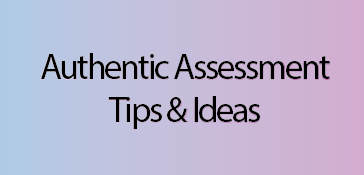Main Page > Introduction to Assessment Design in the AI Age
Please note: The use of AI within teaching and learning is a rapidly developing area. This information reflects our current thinking in October 2023, but please check back regularly as we will be updating the information on this page as things develop.

There has been much discussion recently about AI tools (such as ChatGPT) and their impact, both positive and negative on Higher Education, but particularly around assessment. This information will focus on assessment design, however if you want to know more about AI and its opportunities and challenges for Higher Education – this Jisc Primer article is a good starting point. Many experts claim that these tools will massively affect how we assess our students in the future.
Tools which claim to be able to detect AI generated text, such as the one recently launched by Turnitin, are only ever going to be part of the solution, as the developers are forever playing catch-up as new and more sophisticated AI tools are released. There are question marks over the accuracy of detection technology, so it’s only ever going to be one tool that we use rather than a complete solution.
Follow these links to guides on Using Turnitin’s AI report and University of Huddersfield’s AI Detection guidance.
There seem to be three responses in terms of how we assess students, to take into consideration the proliferation of AI tools which are currently available, and likely to become more sophisticated and harder to detect in the future:
- To try and design out the opportunities for academic misconduct during the assessment design process.
- To acknowledge AI is here to stay and embrace it, encouraging students to use these tools to assist in their assessments, but set clear expectations around their use.
- To revert back to exams: However, this would be a backward step in Higher Education assessment methods. There are numerous reasons why exams are a flawed method of assessment including that they often are not authentic or inclusive, mainly test lower levels of Bloom’s taxonomy and they are not immune from academic misconduct. We recognise that there are some exceptional circumstances when exams are required, but we see this as the exception, not the norm.
We therefore recommend that students assessments are a mix of Options 1 and 2 above. Click on the buttons below for helpful tips and ideas on each of these approaches.
Whichever option you choose, it’s important that this is communicated clearly to students. We are introducing a set of AI use level descriptors, and every assessment brief should include one of these descriptors, in addition to any specific detail you wish to add.
Information/Support for Students:
We have prepared detailed guidance and support for students in the use of AI tools. This is linked from the Student Hub and Brightspace so please encourage your students to use it. There is also a LibGuide which colleagues in the Library have produced. Similar to the staff information, this guidance and support will evolve over time so if you direct students to the page, please provide the link and remind them that the content will be updated as things develop.

Resources for students include key principles around AI for students; an infographic summarising these key principles; information on the use of AI tools in the Huddersfield Essentials Brightspace (Induction) module; some scenarios for use in Flying Start for use with students around the use of AI; updates to the Brightspace module handbook templates within each Brightspace module to link to the updated academic misconduct regulations; and reference builders for student to be able to reference use of AI tools: AI generated text :: Library Services :: University of Huddersfield and AI generated image :: Library Services :: University of Huddersfield.
In addition, the Academic Integrity module on Brightspace has been revised to include guidance and questions about the appropriate use of AI. To help more students to pass first time, we have amended some of the questions which have previously caught students out, and we are introducing new pass mark requirements – 80% on the mandatory quiz, 90% at Stage 1 and retaining 100% at Stage 2. Please do push your students to complete this training as early as possible, ideally before they submit any summative work.

